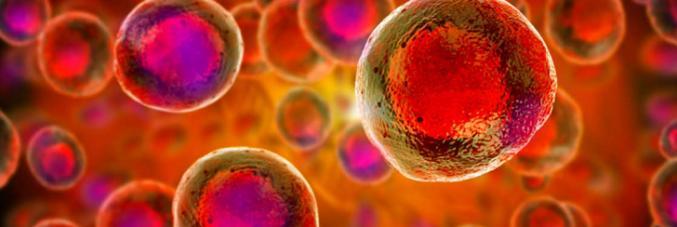
New therapeutic perspectives from the study of mechanisms underlying certain mitochondrial diseases
09.06.2025
“Modelling POLG mutations in mice unravels a critical role of POLγB in regulating phenotypic severity” is the title of the study published in the prestigious international journal Nature Communications by a research team led by Carlo Viscomi, Associate Professor in the Department of Biomedical Sciences at the University of Padua and Principal Investigator at the Veneto Institute of Molecular Medicine (VIMM).
The study sheds light on how mutations in a key enzyme essential to human health—DNA polymerase gamma (POLγ)—can lead to serious mitochondrial diseases. This enzyme is responsible for replicating DNA within mitochondria, the "powerhouses" of our cells. When POLγ malfunctions, mitochondrial DNA becomes unstable, with potentially severe consequences for the organism.
Diseases caused by mutations in the POLG gene are highly heterogeneous and often difficult to diagnose due to the complexity of symptoms: the same mutation can cause different symptoms in different patients. Moreover, there are currently no cures, and patients can only receive treatments aimed at relieving symptoms.
To better understand the mechanisms underlying this variability, the researchers created mutated versions of the protein to analyze their structure and function, and they replicated these mutations in mouse models to observe their effects on the entire organism.
All analyzed mutations significantly reduce POLγ activity. Using cryo-electron microscopy, the team identified structural differences between the human and mouse versions of the protein—particularly in the accessory subunit known as POLγB, which functions to stabilize the enzyme. These differences make the murine enzyme more resistant to mutations compared to the human one, helping explain why the same mutations cause milder defects in mice than in humans. Nevertheless, the mouse models retain the essential features of human diseases, such as mitochondrial DNA instability and reduced enzyme activity and stability.
“This study is important for two reasons. On one hand, it helps us better understand the molecular mechanisms behind diseases caused by POLG mutations. On the other, it opens up new perspectives for developing drugs or gene therapies capable of correcting or compensating for the defects caused by POLG mutations,” says Carlo Viscomi. “The study also highlights the value of animal models in investigating the mechanisms underlying these rare diseases, while accounting for interspecies differences. Understanding these differences is crucial for advancing research toward increasingly effective and personalized therapies.”



